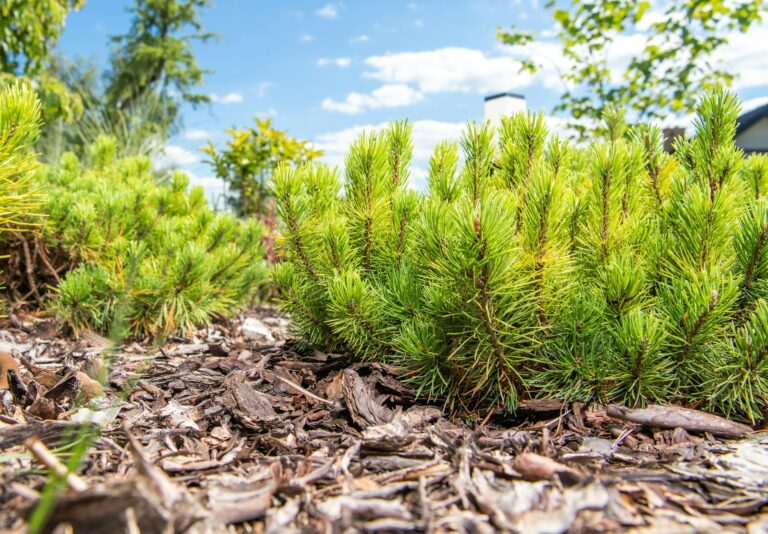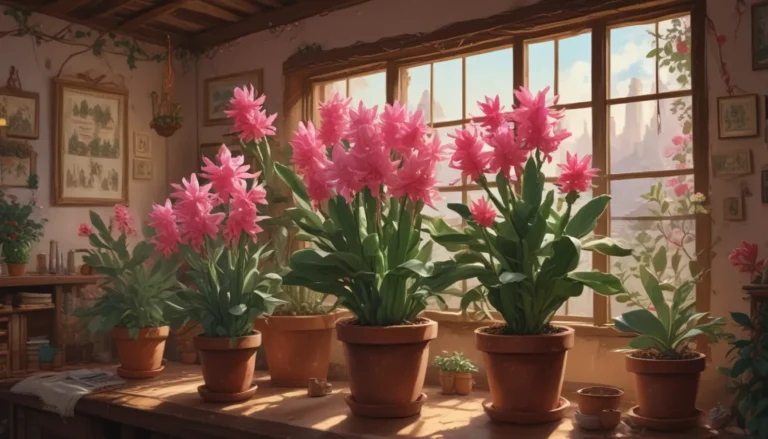The Ultimate Guide to Growing and Caring for Calamint

Are you looking to add a unique flavor to your savory dishes? If so, growing calamint in your garden might be the perfect solution! This lesser-known herb is easy to grow and can provide you with a fresh supply of aromatic leaves and flowers throughout the summer and fall.
In this comprehensive guide, we will explore everything you need to know about cultivating and caring for calamint. From understanding the different species and cultivars to learning how to propagate, harvest, preserve, and cook with this flavorful herb, we’ve got you covered.
Let’s dive into the fascinating world of calamint and discover how you can incorporate this delightful herb into your garden and kitchen.
What Is Calamint?
Calamint, scientifically known as Clinopodium spp., is a genus of small shrubs and herbaceous perennials known for their fragrant leaves and flowers. These plants have a dense, mounding growth habit and produce tubular flowers in a variety of colors such as white, lilac, pink, red, or light blue.
Unlike catmint, which tends to have spikes of flowers held above the foliage, calamint plants feature flowers that grow along the stems, creating a delightful floral display. With over 180 different species of calamint, you’re sure to find a variety that suits your gardening needs.
Cultivation and History
Calamint plants are members of the mint family, Lamiaceae, and are native to a wide geographic range, including Africa, Asia, Europe, North America, and South America. Historically, calamint has been used for its medicinal properties, with references to the herb dating back to the 1500s.
Today, calamint is valued for its culinary uses, with essential oils extracted from C. nepeta showing antioxidant, antimicrobial, and anti-inflammatory properties. Whether you’re growing calamint for its potential health benefits or its aromatic leaves and flowers, this versatile herb can thrive in a variety of climates and soil types.
Calamint Propagation
If you’re interested in growing calamint in your garden, you have several options for propagation. You can start from seeds, take cuttings, divide existing plants, or transplant potted specimens. Each method has its own benefits and challenges, so choose the one that works best for your gardening style.
- From Seed: Sow calamint seeds in early spring, around eight weeks before the last frost. Provide them with well-draining soil and ample sunlight to ensure successful germination.
- From Cuttings: Rooting cuttings from mature plants is a great way to propagate calamint. Use a clean pair of scissors to take cuttings with several pairs of leaves, and follow proper rooting techniques for optimal results.
- From Division: Dividing existing plants in spring or fall can help create new specimens. Wait until the plant is established before dividing and replanting to ensure maximum growth and bloom potential.
- From Transplants: If you have potted calamint plants, transplant them into the ground following proper gardening practices. Prepare the soil, remove the plant from the pot carefully, and ensure proper watering and maintenance for healthy growth.
By following these propagation methods, you can expand your calamint collection and enjoy the beauty and fragrance of this delightful herb in your garden.
How to Grow Calamint
Most species of calamint thrive in full sun and well-draining soil. While they can tolerate a variety of soil types and pH levels, providing them with optimal growing conditions will result in lush foliage and abundant blooms. Water newly planted calamint regularly until established, and then transition to deep but infrequent watering to promote root growth and drought tolerance.
- Growing Tips
- Grow in full sun or provide afternoon shade in hot climates.
- Plant in well-draining soil to prevent waterlogging.
- Water newly planted specimens regularly until established.
- Provide infrequent but deep watering to promote deep root growth.
By following these growing tips, you can ensure that your calamint plants thrive and provide you with an abundance of aromatic leaves and flowers throughout the growing season.
Pruning and Maintenance
Calamint plants require minimal maintenance, making them an excellent choice for low-effort gardening. While some species may form a natural ground cover, it’s essential to weed around the plants to prevent competition for nutrients and water. Applying mulch around the plants can help suppress weeds, retain moisture, and regulate soil temperature.
For species that benefit from pruning, such as C. nepeta, cutting back the plants in spring can help maintain their shape and appearance. Additionally, applying compost periodically can help stimulate growth and encourage profuse blooms.
Calamint Species and Cultivars to Select
When choosing calamint species and cultivars for your garden, consider factors such as climate, soil type, and desired bloom color. Some popular varieties include C. coccineum, known for its scarlet-colored blooms; C. grandiflora, featuring large pink to purple flowers; and C. nepeta, the well-known lesser calamint with delicate white, lilac, or light blue flowers.
By selecting species and cultivars that suit your gardening needs, you can create a beautiful and fragrant herb garden that attracts pollinators and enhances your outdoor space.
- C. Coccineum: Native to the Gulf Coast region of the US, this species features bright red flowers and thrives in sandy, acidic soils.
- C. Grandiflora: With large pink to purple flowers, this species is a showy addition to any garden and grows well in Central Europe and the Mediterranean.
- Variegata: A variegated cultivar of C. grandiflora, this variety features green and white mottled foliage for added interest in the garden.
- C. Nepeta: Commonly known as lesser calamint, this species has grayish-green leaves and delicate white, lilac, or light blue flowers, making it a popular choice for garden borders and containers.
By exploring different calamint species and cultivars, you can create a diverse and visually appealing garden that showcases the beauty and versatility of this charming herb.
Managing Pests and Disease
One of the advantages of growing calamint is its resistance to common garden pests and diseases. While deer and rabbits tend to avoid the strongly scented foliage of these plants, whiteflies can sometimes be a nuisance. To prevent whitefly infestations, consider planting companion plants that attract beneficial insects and follow proper gardening practices to maintain plant health.
If powdery mildew occurs on your calamint plants, prune them back significantly and dispose of infected trimmings to prevent the spread of the disease. By staying vigilant and practicing good garden hygiene, you can keep your calamint plants healthy and thriving.
Garden Uses of Calamint
In addition to its culinary uses, calamint can serve many purposes in the garden and landscape. Use it as a foundation plant, border, ground cover, or edging along a path to add fragrance and visual interest to your outdoor space. Calamint can also attract pollinators like butterflies and bees, making it a valuable addition to any pollinator garden.
When choosing garden companions for calamint, consider plants that complement its colors and growth habits. Pair it with hollyhocks, lavender, roses, and other garden favorites to create a harmonious and visually appealing landscape that provides food and habitat for beneficial insects.
Harvesting Calamint
Harvesting calamint is a simple process that can be done throughout the growing season. While you can pick leaves and flowers as needed for culinary purposes, consider harvesting a larger amount for drying and preserving. Once harvested, rinse the stems, dry them thoroughly, and store the leaves and flowers in an airtight container for future use.
Preserving
To preserve calamint for use in cooking, drying is the best method. Similar to oregano, thyme, and marjoram, dried calamint leaves and flowers can be stored on your spice rack for use in culinary creations. Ensure the herbs are fully dehydrated before removing them from the stems and storing them in a cool, dark location to maintain their flavor and aroma.
Recipes and Cooking Ideas
Calamint can be used in a variety of culinary creations, from herbal teas to savory dishes. Try steeping a sprig of calamint in hot water for a refreshing herbal tea or using the leaves and flowers to enhance the flavor of eggplant, mushrooms, and artichokes. This versatile herb is commonly used in Mediterranean cuisine and can be added to spice mixes like za’atar for a unique flavor profile.
Whether you’re a fan of herbal teas or savory dishes, calamint is a versatile herb that can elevate your cooking to new heights. Explore different ways to incorporate calamint into your culinary creations and discover the delightful flavors and aromas this herb has to offer.
Quick Reference Growing Guide
- Plant Type: Small shrub or herbaceous perennial
- Flower/Foliage Color: White, blue, pink, purple, red / grayish-green to green, or green and white
- Native to: Africa, Asia, Europe, North America, South America
- Hardiness (USDA Zones): 5-9
- Bloom Time/Season: Spring, summer, fall (depending on the species)
- Exposure: Full sun, part shade, full shade
- Height: 6-30 inches (depending on variety)
- Spread: 12-36 inches (depending on variety)
- Water Needs: Low to moderate
- Maintenance: Low
- Companion Planting: Cuban oregano, dianthus, hollyhocks, lavender, purple coneflower, roses, salvia, sage, scented geraniums, stonecrop, yarrow
- Family: Lamiaceae
- Genus: Clinopodium
- Species: Ashei, brownei, dentatum, glabellum, grandiflorum, menthifolium, nepeta, vulgare
Calling All Calamints
Calamint is a hidden gem in the world of garden herbs, offering fragrance, beauty, and culinary possibilities in one charming package. Whether you’re a seasoned gardener or new to herb cultivation, growing calamint can be a rewarding experience that adds diversity and interest to your garden.
Are you ready to explore the world of calamint and discover the myriad benefits this herb has to offer? Share your experiences with calamint in the comments below and let us know how this delightful herb is thriving in your garden. Feel free to share photos and tips for growing and caring for calamint with our community of herb enthusiasts!
For more herb gardening tips and inspiration, check out our other resources on lemon balm, catmint, and horehound. Happy gardening!





